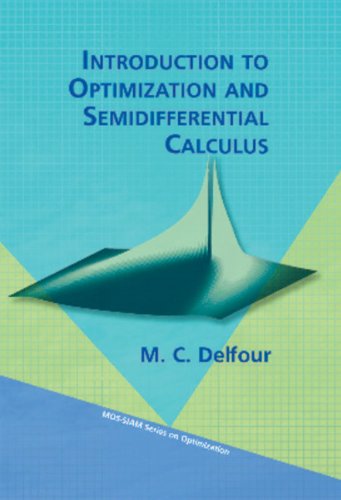

Most ebook files are in PDF format, so you can easily read them using various software such as Foxit Reader or directly on the Google Chrome browser.
Some ebook files are released by publishers in other formats such as .awz, .mobi, .epub, .fb2, etc. You may need to install specific software to read these formats on mobile/PC, such as Calibre.
Please read the tutorial at this link: https://ebookbell.com/faq
We offer FREE conversion to the popular formats you request; however, this may take some time. Therefore, right after payment, please email us, and we will try to provide the service as quickly as possible.
For some exceptional file formats or broken links (if any), please refrain from opening any disputes. Instead, email us first, and we will try to assist within a maximum of 6 hours.
EbookBell Team

4.4
52 reviewsIt offers an original and well integrated treatment of semidifferential calculus and optimization, with an emphasis on the Hadamard subdifferential, introduced at the beginning of the 20th century and somewhat overlooked for many years. References to original papers by Hadamard (1923) and Fréchet (1925) are included, along with fundamentals of convex analysis (convexification, Fenchel duality, linear and quadratic programming, two-person zero-sum games, Lagrange primal and dual problems, semiconvex and semiconcave functions). The book also includes complete definitions, theorems, and detailed proofs, along with commentaries that put the subject into historical perspective and numerous examples and exercises throughout each chapter, and answers to the exercises provided in an appendix.
Useful background material in classical analysis has been added at the end of Chapter 1 to make the book self-sufficient.
Audience: This book is primarily intended as a textbook for a one-term course in optimization and semidifferential calculus for undergraduate students in mathematics, physics, engineering, economics, and other disciplines who have a basic knowledge of mathematical analysis and linear algebra. It also contains advanced material that makes it suitable for a first year graduate course or as a companion to other textbooks.
Contents: Chapter 1: Introduction; Chapter 2: Existence, Convexities, and Convexification; Chapter 3: Semi-differentiability, Differentiability, Continuity, and Convexities; Chapter 4: Optimality Conditions; Chapter 5: Constrained Differentiable Optimization; Appendix A: Inverse and Implicit Function Theorems; Appendix B: Answers to Exercises